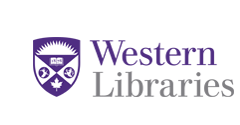Date of Award
2006
Degree Type
Thesis
Degree Name
Master of Science
Program
Kinesiology
Supervisor
Dr. Peter Fowler
Abstract
The primary purpose of this project was to examine the effect of gender on self reported outcome at least 2 years following high tibial osteotomy (HTO) for treatment of varus gonarthrosis. Complete data from 65 patients (24 female and 41 male) who previously underwent medial opening wedge HTO by surgeons at the Fowler Kennedy Sport Medicine Clinic (FKSMC) were available for analysis. Outcome Western Ontario and McMaster University Osteoarthritis Index (WOMAC) scores (dependent variable) were collected via telephone and the length of time from surgery was recorded. Pre operative and post-operative (2 years) mechanical axis angles (MAA) were measured from double leg standing hip-to-ankle radiographs. We used multiple linear regression to estimate the strength of the association between the post-operative WOMAC score and six independent predictor variables (gender, age, BMI, pre-op WOMAC, time (months), and MAA). Gender, age, BMI, time, pre-operative MAA (first model) and post-operative MAA (second model) were not significant contributors to WOMAC scores. Pre operative WOMAC scores approached significance in the pre-MAA model (β=0.26, 95% CI, -0.03 - 0.66, p=0.076) and were significant in the post-MAA model (β=0.36, 95% CI, 0.091 - 0.74, p=0.013). Residual analysis confirmed the data satisfied the four assumptions of multiple regression (normality, independence of error, linearity, homoscedasticity). The results of this study indicate that gender is not a significant predictor of outcome following HTO.
Recommended Citation
Oliver, Melissa J., "DO MALES REPORT A BETTER OUTCOME THAN FEMALES FOLLOWING HIGH TIBIAL OSTEOTOMY? A COHORT STUDY" (2006). Digitized Theses. 5046.
https://ir.lib.uwo.ca/digitizedtheses/5046

